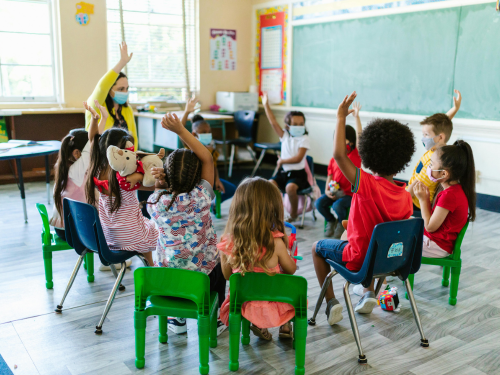(Pexels / RDNE Stock project)
Since 2013, the total number of foreign residents in Japan has been steadily increasing, interrupted only by the travel restrictions imposed during the COVID-19 pandemic. Among these are children, many of whom are enrolled in Japanese public schools and require Japanese language instruction. The number of children requiring Japanese language instruction is expected to keep increasing.
Under these circumstances, it is essential to understand how multicultural education — which accommodates the needs of these students while integrating them with native Japanese students — is accomplished in Japanese public schools. A recent study by Tinka Delakorda Kawashima, lecturer at Hiroshima University’s Graduate School of Humanities and Social Sciences, observed teaching practices at an elementary school in Higashihiroshima City, identified shortcomings of current methodologies, and proposed strategies for improving multicultural education in Japan. The paper was published in the journal Azijske Študije — Asian Studies on May 28, 2025.
“This study seeks to understand why Japanese public schools often fail to fully support students from diverse cultural and linguistic backgrounds,” says Delakorda Kawashima. “Specifically, it investigates gaps in both multicultural education and teacher training that prevent effective integration of foreign-background children into the school environment.”
Delakorda Kawashima’s observations revealed that the elementary school in question is focused on educating students according to a governmental directive dating back to 1965, which mandates that no special treatment be given to non-Japanese students, and that they be given the same education as Japanese students. This includes not only educational materials but also social and cultural mores. Additionally, in this context, multicultural education’s focus is almost exclusively on increasing Japanese proficiency while overlooking social inclusion, and the cultural realities faced by diverse students.
Gaps in training leave teachers unprepared for challenges of multicultural education
According to the study, these factors are not conducive to a truly multicultural education, one that not only respects individual differences but also actively addresses issues of diversity and inequality. Delakorda Kawashima outlined three specific issues that she observed: monoculturalism, conformity and segregation. “True inclusion in education goes beyond language support and equal treatment. Teachers must recognize and address cultural and religious differences to create genuinely inclusive classrooms that support every child's sense of belonging and identity,” she elaborates.
Building on previous research that advocates for participatory or practical learning, Delakorda Kawashima focused on raising religious awareness in teacher training, designing and carrying out an experiment that focused on dialogue and self-reflection in pre-service teachers in training. By the end of the experiment, participants had gained a far better understanding of the broad religious diversity within their cohort, laying the foundation for better understanding of other cultures required for effective multicultural learning.
“Many teachers feel unprepared to handle cultural or religious diversity — not out of unwillingness, but due to lack of training. The system focuses on teaching students to ‘fit in,’ rather than empowering schools to ‘open up,’” Delakorda Kawashima says. By prizing conformity and penalizing dissidence, the system leaves minority children more vulnerable to exclusion.
This work highlights the shortcomings of multicultural education in Japan, albeit from a single public school in Higashihiroshima City. It underscores the necessity of a paradigm shift in teacher training to fully engage with multicultural education strategies. “The next step is to develop and implement teacher training programs that include practical, interactive activities around cultural awareness. The ultimate goal is to reshape educational attitudes across Japan, so schools not only accommodate diversity but embrace it as a foundation for stronger, more empathetic communities,” Delakorda Kawashima concludes.


 Home
Home


